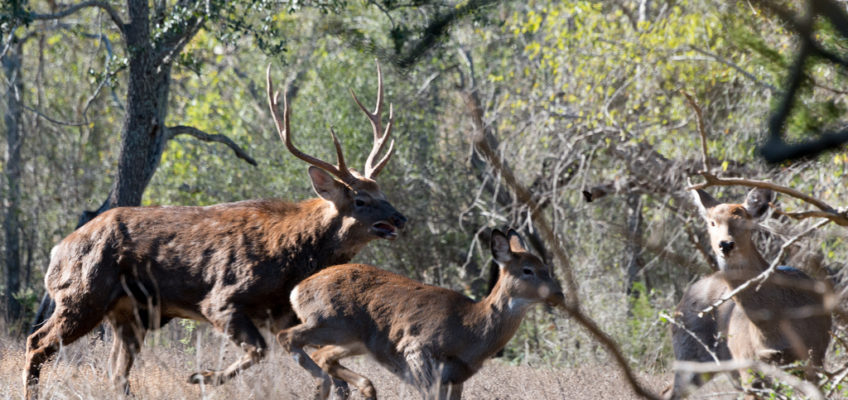With the cold settling in across the United States, much of the rut activity is beginning to die down. The big bucks you have been seeing on your trail cams have disappeared, and now you are wondering how you will be able to fill that final buck tag. The bucks have mated, and many of the larger more mature bucks are becoming more and more elusive.
We have entered the dreaded post-rut period and hunting those trophy wall hangers has reached one of the most difficult parts of the season. It does not have to be the end of the season though, and if hunters adapt their strategy, they can have successful late season hunts.
To be successful during this period you have to adjust your strategy. Knowing how deer act during this phase of hunting will help you be better prepared to hunt those elusive post rut monsters. You don’t want to be left out in the cold with no meat in the freezer or an empty spot on the wall.
Weather
The primary change in deer activity is due to the shift in weather. The months of December and January regularly bring snow and cold weather to much of the U.S., and this has the deer focusing mainly on survival. The deer priority begins to shift from mating to finding sustainable food sources that provide the needed nutrients in the cold winter months.
If it is a seasonally warmer winter, the rut may last longer, but once the temperature starts dropping the deer become more elusive, and you need to develop a new post rut strategy. Deer will generally be migrating towards new sources of food or trying to find food sources that have not been depleted earlier in the year.
Food Source
As the food sources are beginning to dwindle most deer are worried about ensuring they have enough food for the long winter ahead. They are proactively searching for food, and they will begin to congregate around areas where food is abundant. Many spots deer will look for include corn fields not covered by snow or other areas that hold food, especially white oak acorns.
Knowing your property and where food is will help you be better prepared to catch those elusive bucks in the winter time. While deer will be looking for food, a hunter can place out a feeder or put out a corn pile that brings deer regularly to your spot. Having a feeder that is on a timer will prevent deer from eating all the corn and will help your corn supply last longer.
Providing a food source for deer will allow them to have a regular spot to get the nutrients they need for the long cold winter ahead. It will have them coming back regularly to this spot, and with proper preparation, you may be able to catch a large buck making his way to your feeder. While deer will be bedding in deep thickets, they will generally try to sleep close to where they have an abundant food source.
Bedding
The cold weather will have the deer up long into the night and up earlier in the day. As they move to stay warm, one strategy is to hunt the outskirts of the area's deer are bedding around. This will require a lot of scouting to find where deer are bedding, but usually during the post-rut deer will be found in very thick woods or draws.
This area provides a sense of protection and while it is not ideal to hunt directly on the bedding area, placing a mobile climber stand around deer trails will help you catch those big bucks when they move to feed. A mobile climber stand is a better option, as it gives you the ability to change your location every day. Once you can find the bedding area, you can try to set up a spot to ambush deer.
Catching Them Between
When you can pinpoint the food source and where the deer are bedding, you can begin planning on how you will harvest a deer between these two areas. Post rut deer are willing to travel farther as food has become the new priority. They are no longer worried about mating, and now they are focused primarily on surviving the cold winter.
To catch deer between their feeding and bedding area may require you to set new stands. The stands from earlier in the season may not be in the optimal place to catch these deer during the post rut. One way to try track deer activity on your property is to place trail cameras on your property. This will allow you to place your tree stand in a place that can reap major post rut rewards.
Calling
Just because the rut is over it doesn’t mean you should stop using all your rut tactics. When you set up between a food source and deer bedding ground, you may be able to entice them to leave their bedding area by using grunts to rattle. There are still bucks which will be willing to respond to a rattle or a grunt.
At this time, it is important to not overdo your grunting or rattling. Instead, you should use a less aggressive approach. Bucks will not fight one another during this period but periodic sparring does take place, and you may be able to spark the interest of a buck that is bedded down.
Conclusion
One of the major strategies for the post rut is being able to change your hunting pattern. As deer patterns are changing you must be ready to adapt to the colder weather and the new deer activity. Knowing that deer will be actively searching for a new food source and find the areas that deer are bedding in will help you zero in on those big bucks. If you are willing to put in the work, you may find success in your post-rut hunt.


Leave a Reply